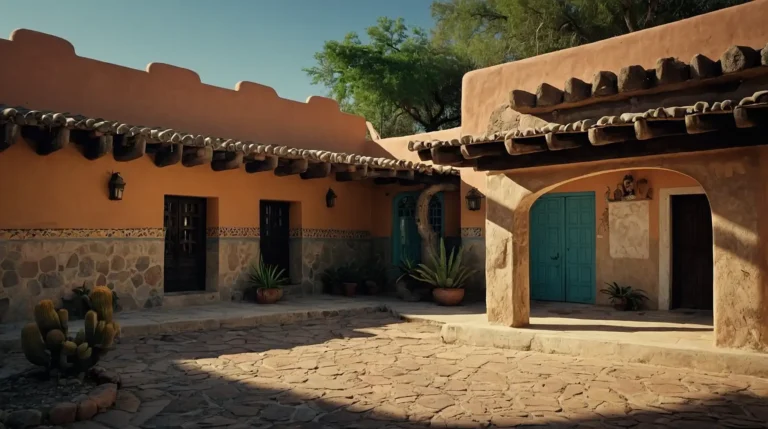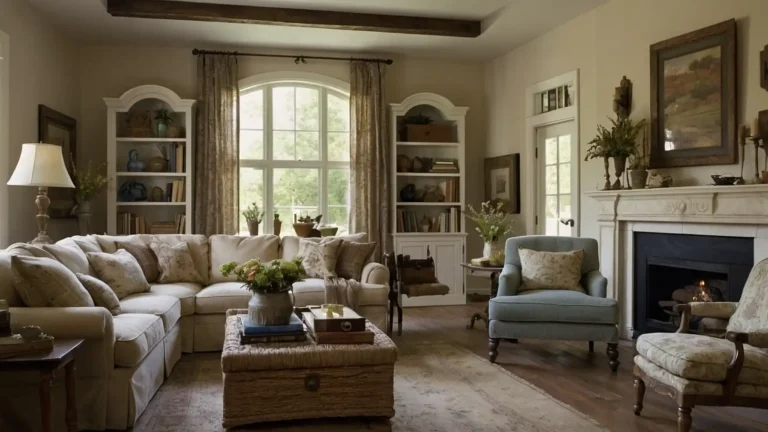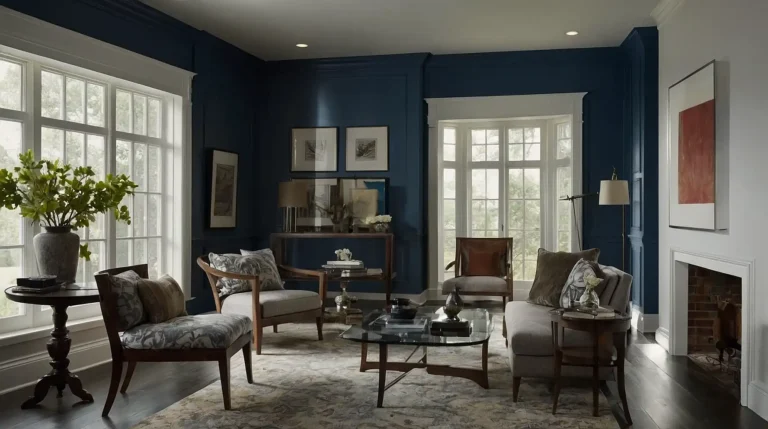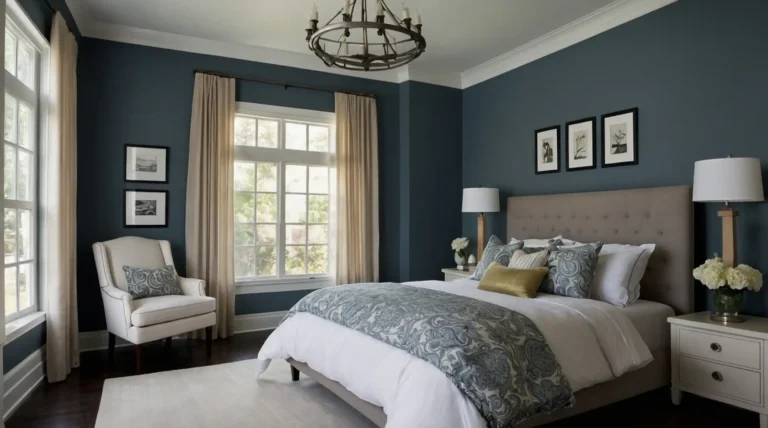27 Front Flower Bed Ideas
Your front flower bed creates the first impression visitors have of your home. The right design combination transforms ordinary landscaping into stunning curb appeal.
Smart plant choices and thoughtful layouts work together beautifully. You can achieve magazine-worthy results regardless of your gardening experience level.
These creative ideas suit every style and budget perfectly.
1: Cottage Garden Charm

Mix perennials, annuals, and herbs in a delightfully informal arrangement. You create abundant blooms that spill naturally over pathway edges.
Plant hollyhocks, delphiniums, and roses for classic cottage appeal. Add lavender and rosemary for fragrance and practical kitchen use.
Your romantic garden welcomes visitors with old-world charm.
2: Monochromatic Color Schemes
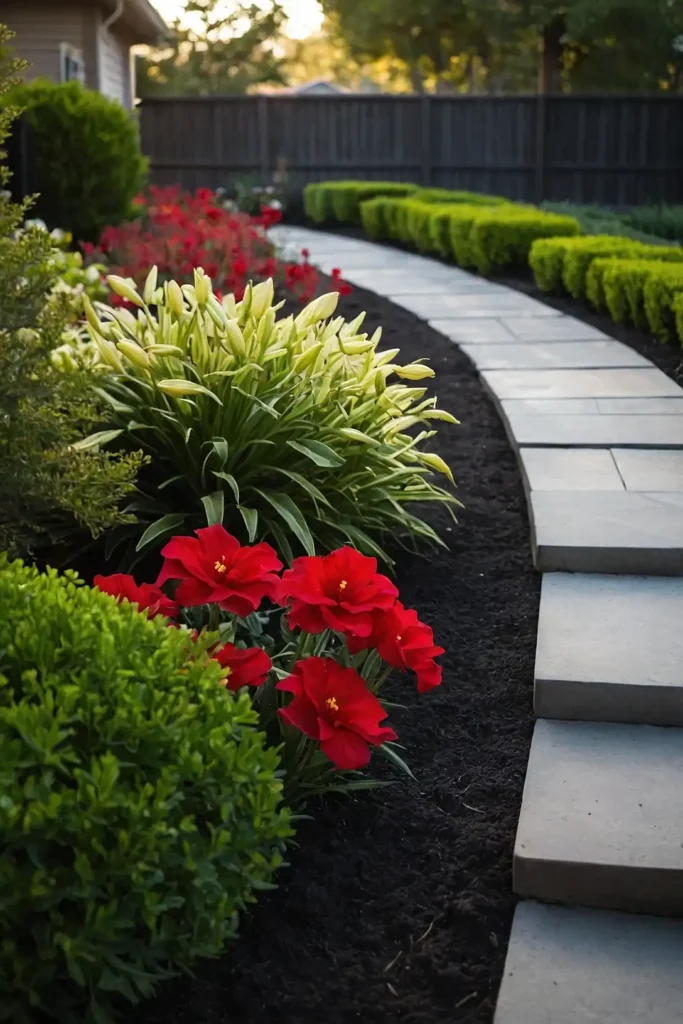
Choose flowers in varying shades of one color for sophisticated elegance. You achieve cohesive design that photographs beautifully year-round.
White gardens using roses, hydrangeas, and alyssum create timeless appeal.
Purple schemes with lavender, salvia, and catmint offer calming effects.
Your single-color palette makes bold design statements effortlessly.
3: Seasonal Succession Planting
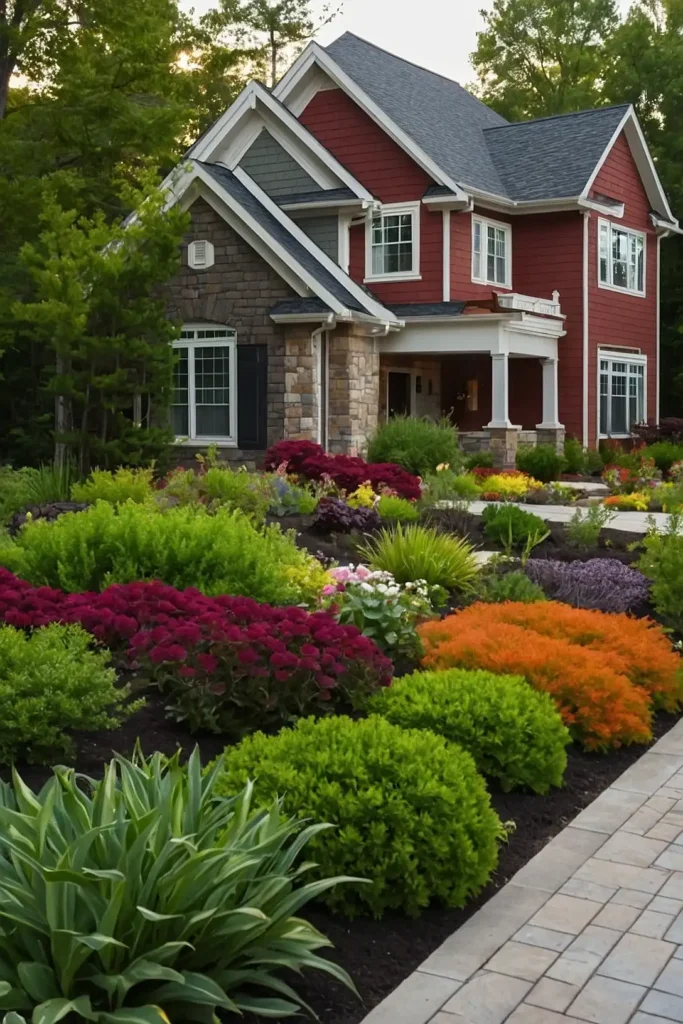
Plan continuous blooms from spring through fall with strategic plant timing. You maintain colorful displays when neighbors’ gardens look dormant.
Start with bulbs, transition to summer annuals, finish with autumn mums. Include evergreen structure plants for winter visual interest.
Your garden provides beauty throughout every season consistently.
4: Rock Garden Borders
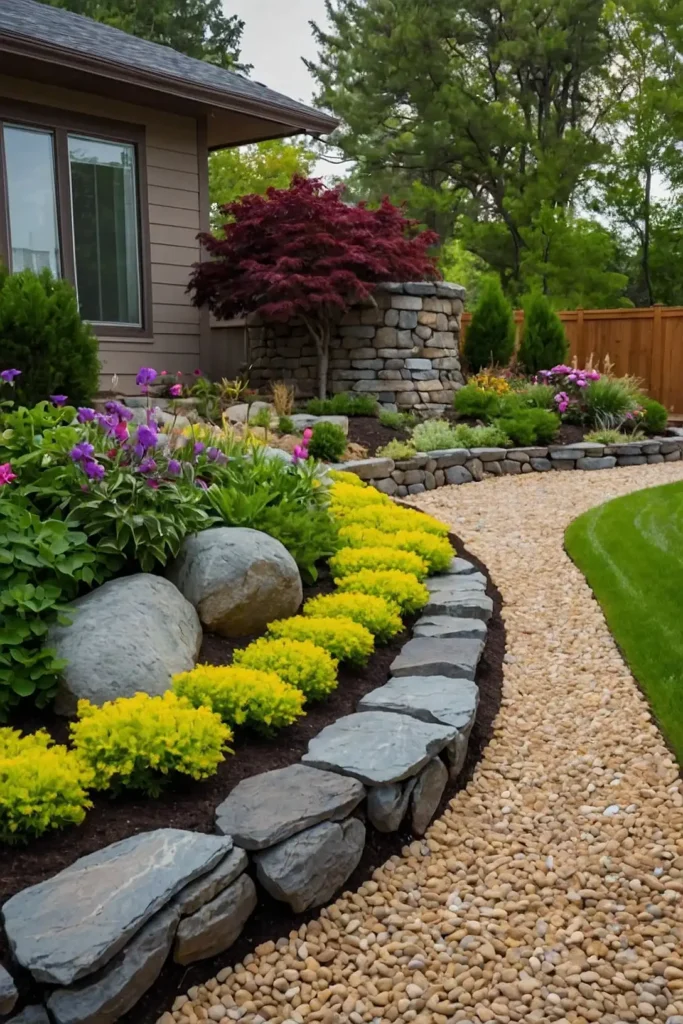
Incorporate natural stones with drought-tolerant plants for low-maintenance beauty.
You create texture and height variation without extensive watering needs.
Combine sedums, ornamental grasses, and alpine plants between stone groupings. Use local rocks that complement your home’s exterior materials.
Your rock garden thrives with minimal care and maximum impact.
5: Butterfly and Pollinator Gardens

Select native flowers that attract beneficial insects and colorful butterflies. You support local ecosystems while enjoying constant natural entertainment.
Plant bee balm, echinacea, and black-eyed Susans for maximum appeal.
Include host plants like milkweed for butterfly reproduction cycles.
Your garden becomes a living habitat that benefits everyone.
6: Formal Geometric Patterns
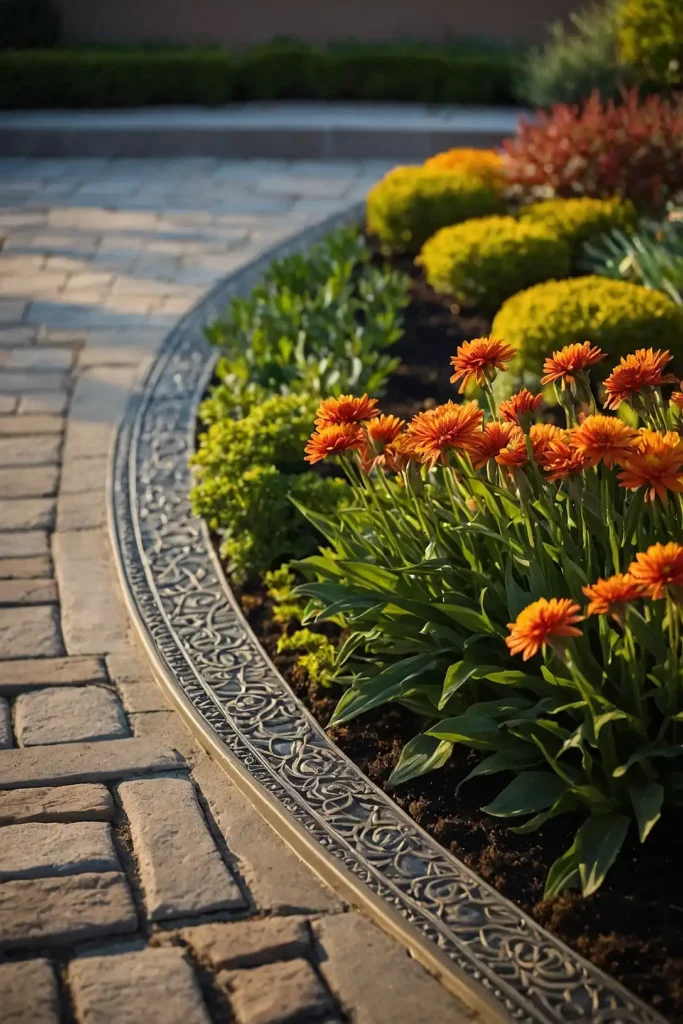
Design structured layouts using boxwood hedges and precise plant spacing. You achieve elegant symmetry that complements traditional architecture styles.
Create diamond or circular patterns filled with seasonal color plantings. Maintain clean edges and uniform heights for polished appearances.
Your formal garden projects sophistication and careful attention to detail.
7: Native Plant Showcases
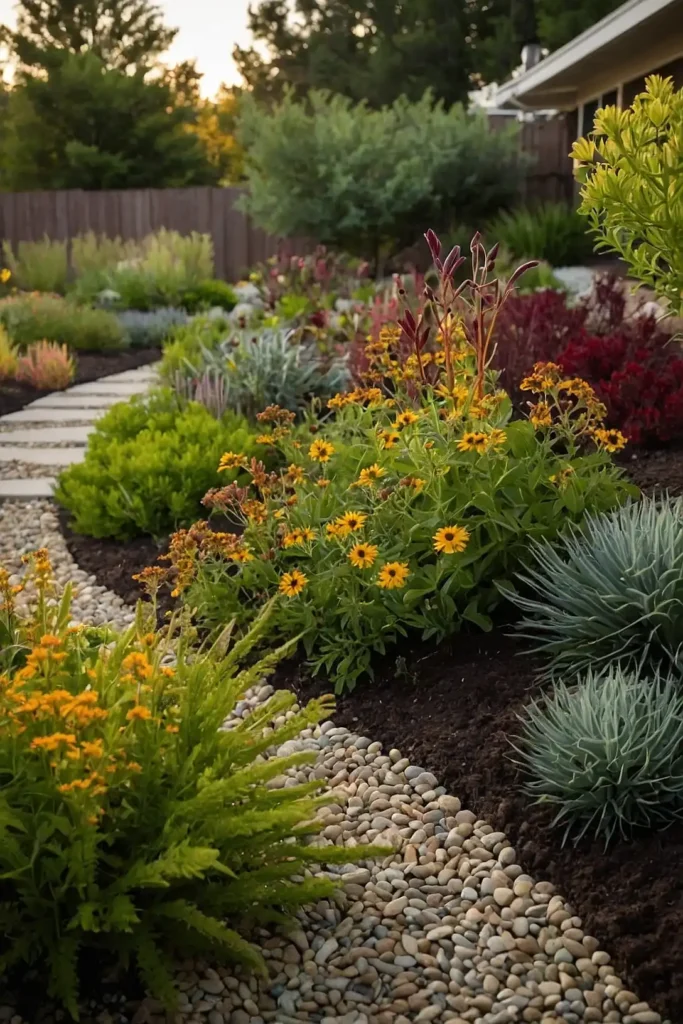
Feature plants indigenous to your region for effortless growing success. You reduce water usage while supporting local wildlife naturally.
Research regional native societies for plant recommendations and sources.
Group plants with similar water and sun requirements together.
Your native garden connects your landscape to natural local ecosystems.
8: Vertical Interest Elements
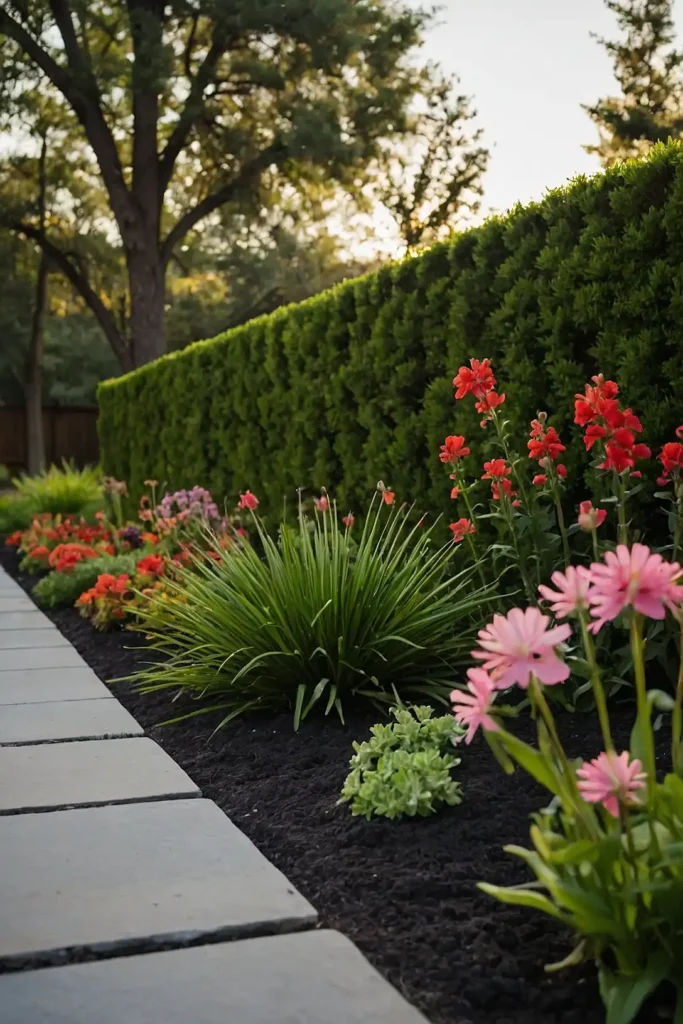
Add height with tall grasses, climbing vines, and architectural plant forms. You create dynamic compositions that draw eyes upward naturally.
Include ornamental grasses like fountain grass or feather reed grass. Train clematis or morning glories on decorative supports.
Your layered garden provides visual depth and architectural interest.
9: Edible Flower Combinations

Blend ornamental beauty with culinary usefulness in attractive mixed plantings.
You harvest fresh ingredients while maintaining gorgeous garden displays.
Plant nasturtiums, calendulas, and violas among decorative vegetables.
Include herbs like thyme and oregano for fragrance and flavor.
Your beautiful garden feeds your family and delights your senses.
10: Shade-Loving Plant Gardens
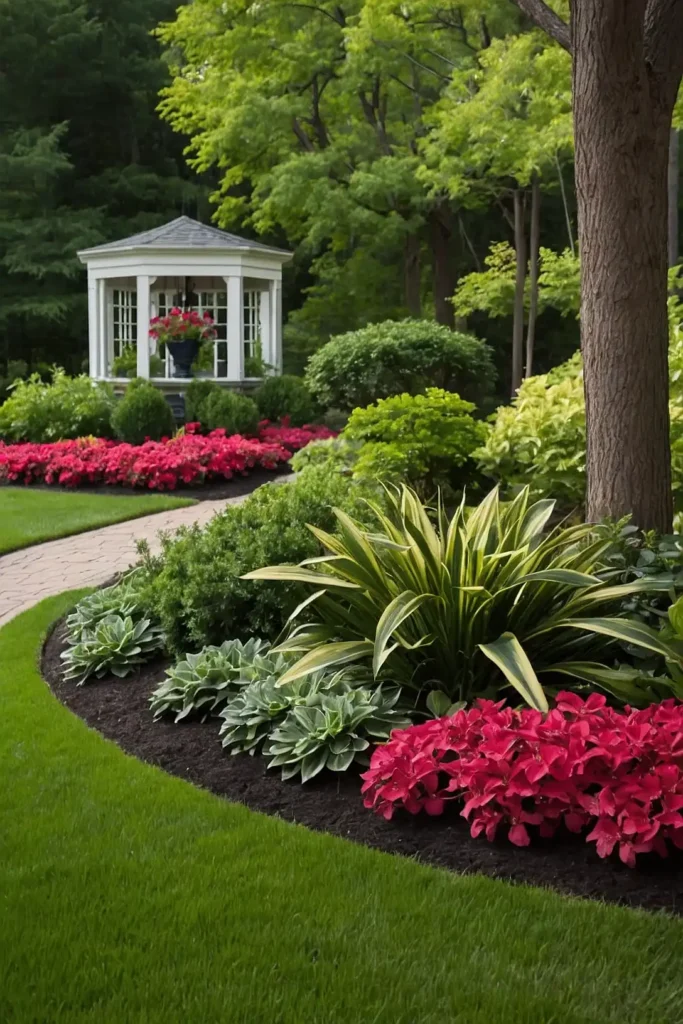
Transform challenging low-light areas into lush, colorful garden retreats. You turn problem spots into stunning focal points effortlessly.
Use hostas, astilbe, and begonias for reliable shade performance. Add ferns and heuchera for interesting foliage texture contrasts.
Your shade garden proves that sun isn’t required for beauty.
11: Mediterranean-Style Plantings
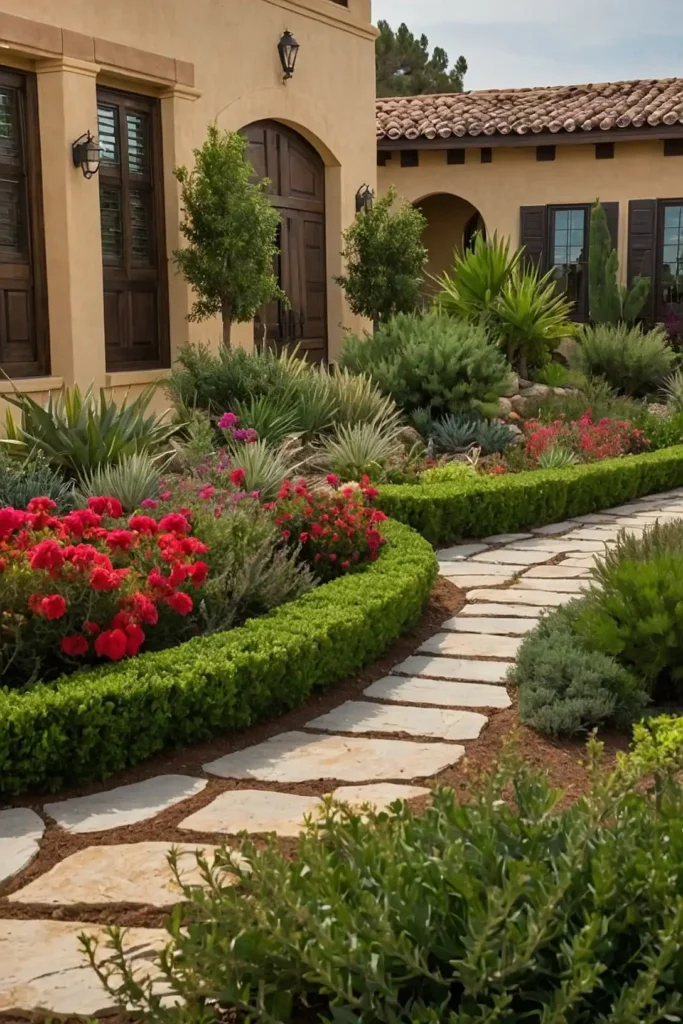
Create drought-resistant gardens inspired by coastal European landscapes naturally.
You achieve exotic appeal while reducing water consumption significantly.
Combine lavender, rosemary, and ornamental olive trees with gravel mulch.
Add terracotta containers filled with succulents for authentic touches.
Your Mediterranean garden transports visitors to sunny vacation destinations.
12: Border Edge Definitions
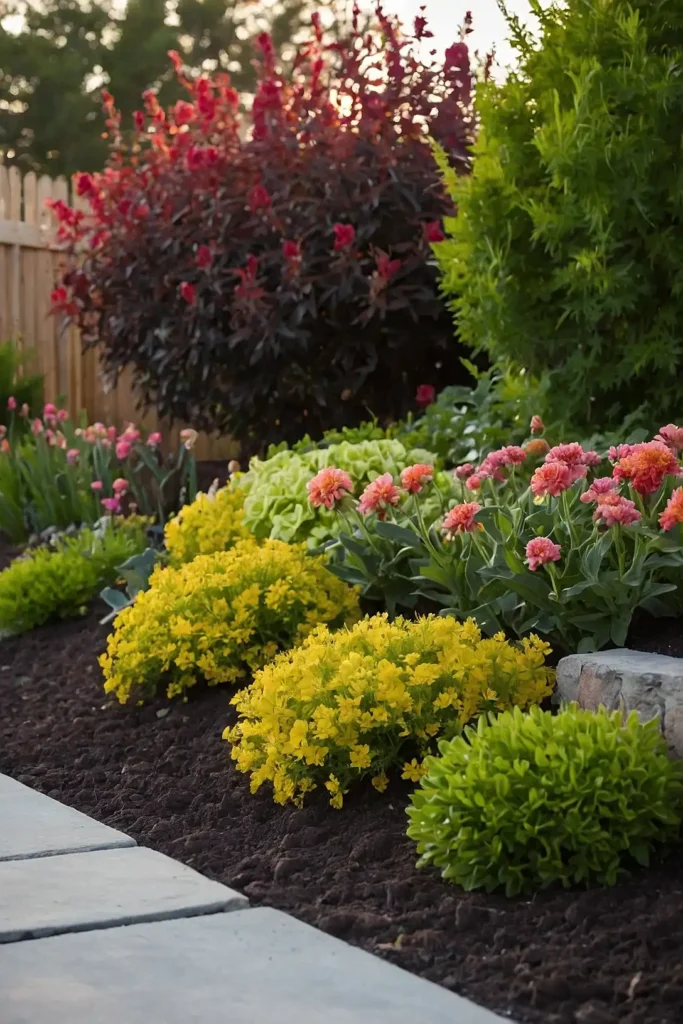
Install clear boundaries that separate garden beds from lawn areas cleanly.
You create professional-looking transitions that simplify maintenance routines.
Use metal, stone, or brick edging materials that complement architectural styles.
Maintain consistent heights and smooth curves for polished results.
Your defined borders give gardens structured, finished appearances.
13: Fragrant Garden Experiences
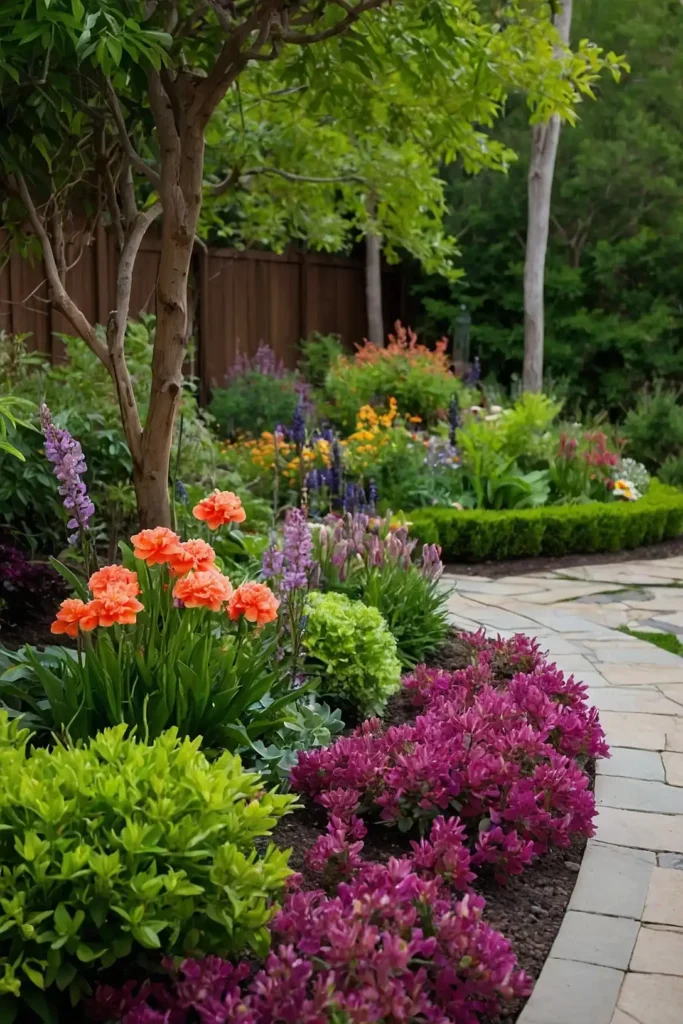
Select flowers and herbs that release pleasant scents throughout growing seasons.
You create sensory gardens that delight visitors before they reach your door.
Plant sweet alyssum, stock, and night-blooming jasmine for evening fragrance.
Include mint and lemon balm for refreshing daytime scents.
Your aromatic garden engages multiple senses simultaneously and memorably.
14: Color-Blocked Planting Schemes
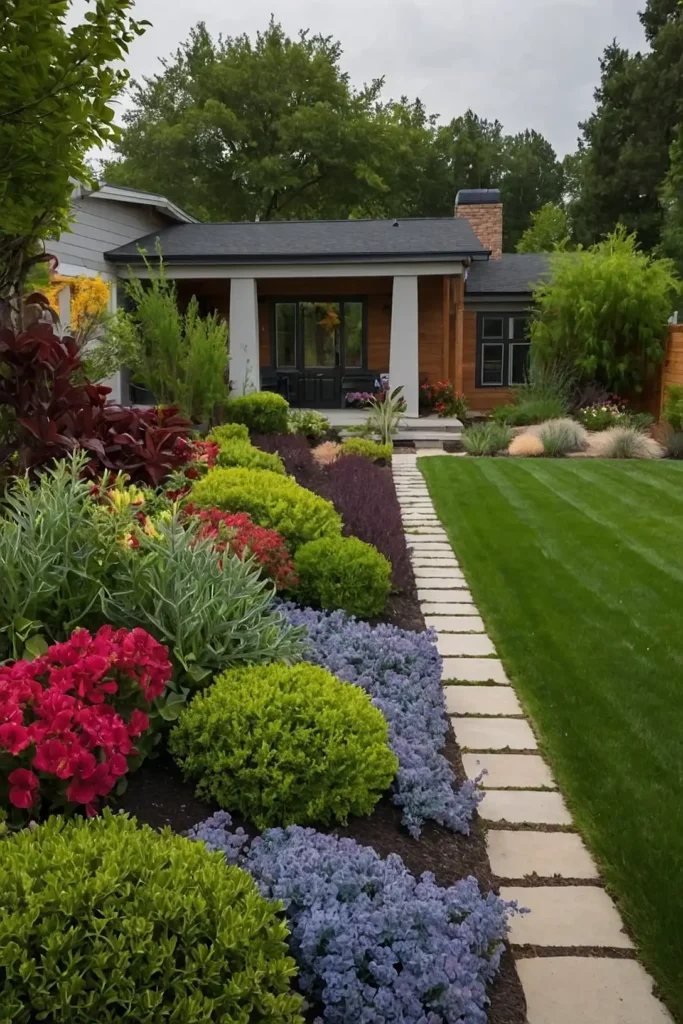
Group identical plants in large masses for bold visual impact.
You create contemporary garden designs that photograph beautifully for social media.
Plant entire sections with single varieties like orange marigolds or purple petunias. Repeat groupings throughout the bed for rhythmic patterns.
Your blocked colors make strong statements that neighbors notice immediately.
15: Mixed Texture Combinations

Combine plants with different leaf shapes, sizes, and surface textures. You add visual interest that remains appealing even without flowers.
Pair broad hostas with fine-textured ornamental grasses and spiky yuccas. Include fuzzy lamb’s ear and glossy camellia leaves.
Your textured garden provides beauty through foliage diversity year-round.
16: Raised Bed Installations
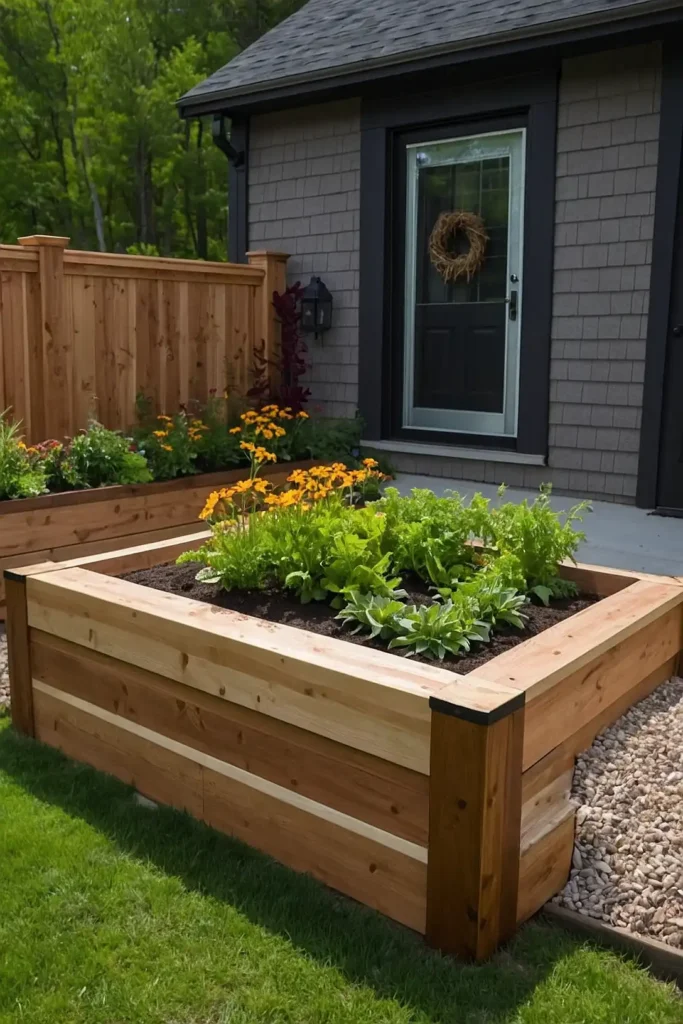
Build elevated planting areas that improve drainage and soil conditions. You create better growing environments while adding architectural interest.
Use stone, wood, or concrete blocks that match your home’s materials. Fill with quality soil amendments for superior plant performance.
Your raised beds provide better growing conditions and easier maintenance.
17: Ornamental Grass Features

Incorporate grasses that provide movement, sound, and seasonal color changes. You add dynamic elements that respond beautifully to breezes.
Choose varieties like miscanthus, pennisetum, or switchgrass for different effects.
Position them where morning or evening light creates silhouettes.
Your grass garden adds motion and music to static landscapes.
18: Bulb Naturalization Projects

Plant spring bulbs in informal drifts that return annually automatically.
You create spectacular spring displays that require minimal ongoing effort.
Choose daffodils, crocuses, and alliums that multiply naturally over time. Plant in autumn for spring emergence and establishment.
Your naturalized bulbs provide reliable spring color for decades.
19: Succulent and Cactus Gardens
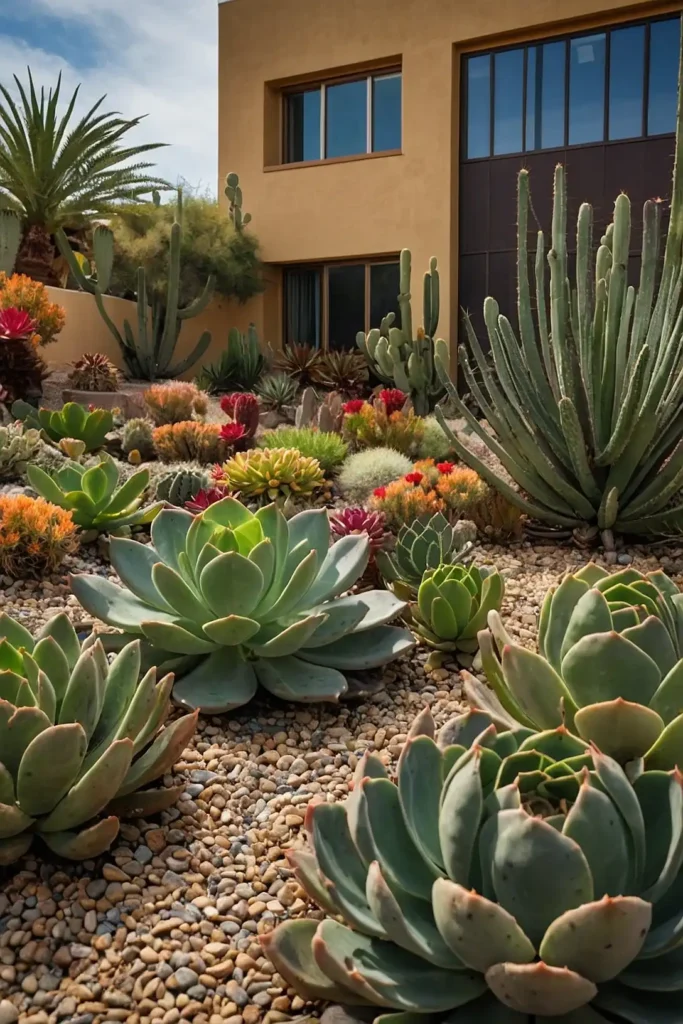
Design water-wise landscapes using drought-adapted plants with architectural forms. You achieve modern aesthetics while conserving precious water resources.
Combine different succulent shapes, sizes, and colors for visual interest. Use decorative gravel mulches that complement plant colorations.
Your succulent garden thrives with minimal water and maximum style.
20: Annual Color Rotations

Plan seasonal displays using temporary plantings that provide maximum impact. You refresh your garden’s appearance multiple times each year.
Spring pansies transition to summer impatiens, then autumn chrysanthemums.
Replace spent plants with fresh varieties for continuous color.
Your rotating garden stays vibrant and exciting throughout growing seasons.
21: Foundation Planting Updates
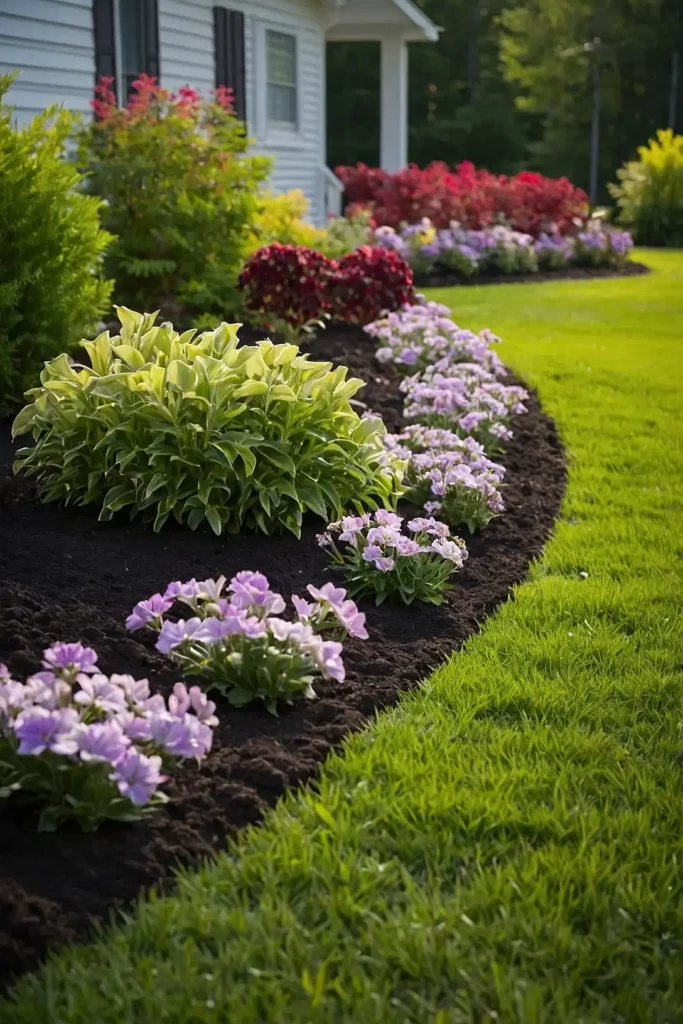
Refresh tired shrub borders with flowering additions that complement existing plants.
You enhance established landscapes without complete renovation costs.
Add perennials like daylilies and coral bells between mature shrubs. Include seasonal annuals for color bursts throughout growing seasons.
Your updated foundation plantings look refreshed and more interesting.
22: Woodland Garden Styles
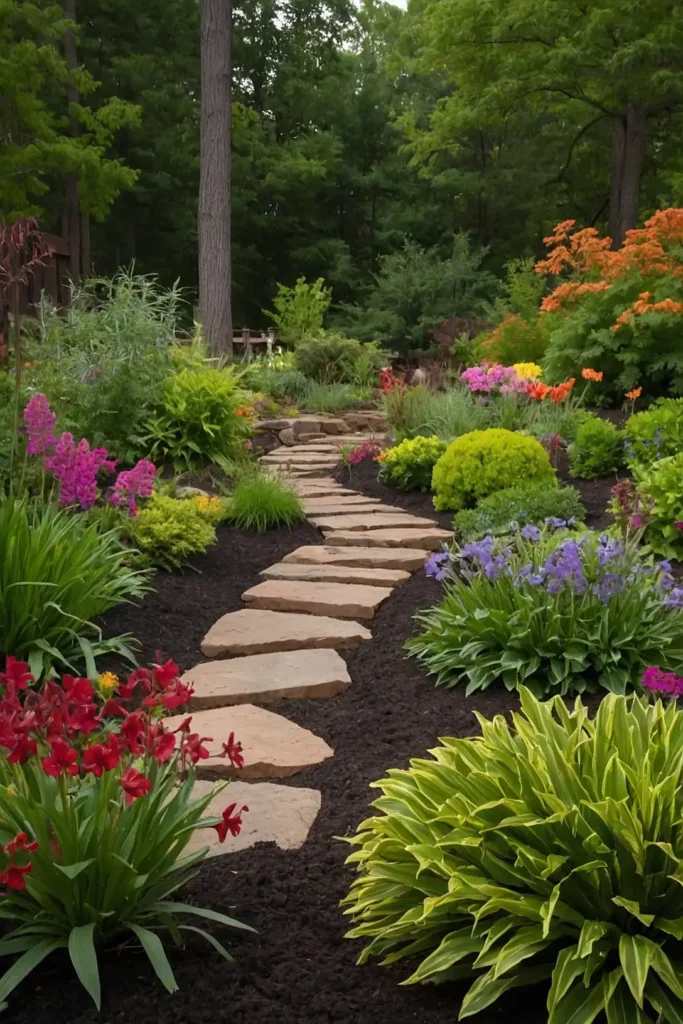
Create natural-looking plantings that mimic forest floor environments authentically.
You establish low-maintenance gardens that feel organic and peaceful.
Use ferns, wild ginger, and native wildflowers under existing trees. Add natural mulches like shredded leaves for authentic appearances.
Your woodland garden connects your home to natural forest ecosystems.
23: Cutting Garden Sections
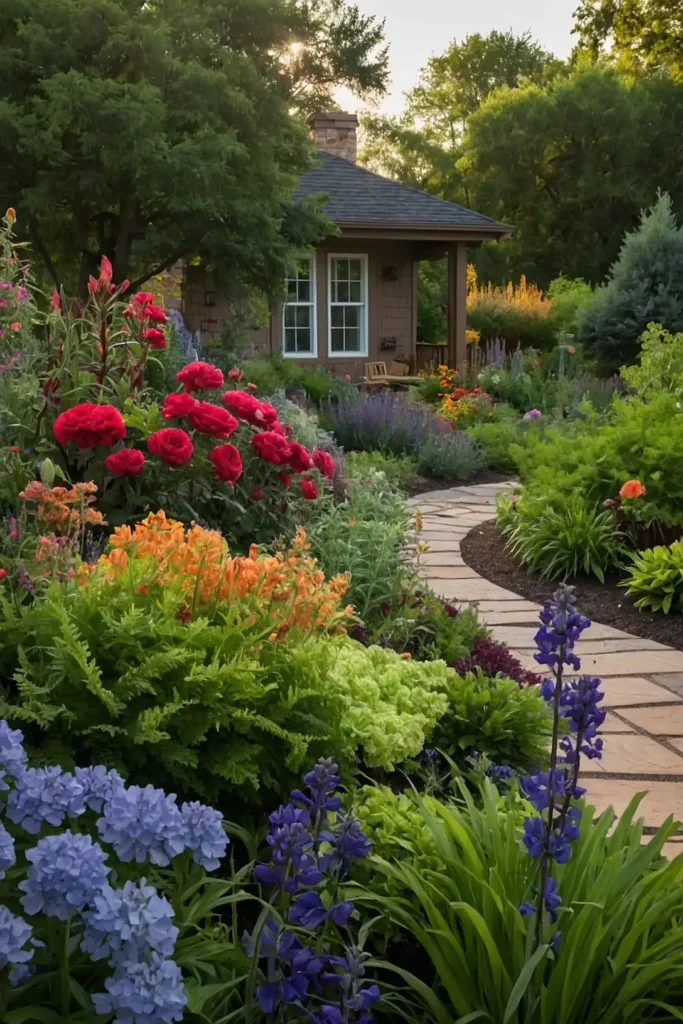
Dedicate space for flowers specifically intended for indoor bouquet arrangements. You enjoy fresh flowers inside while maintaining outdoor beauty.
Plant zinnias, cosmos, and sunflowers in organized rows for easy harvesting. Include greenery like eucalyptus and ferns for arrangement fillers.
Your cutting garden provides indoor beauty and outdoor gardening satisfaction.
24: Water-Wise Desert Themes
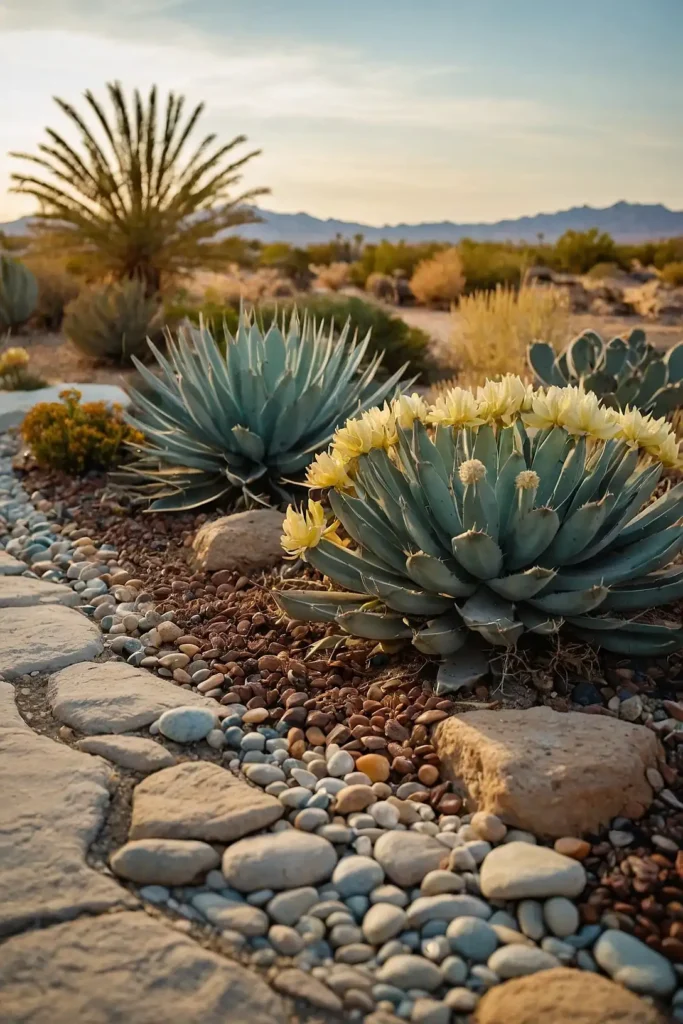
Embrace arid climate aesthetics using plants adapted to minimal moisture. You create striking landscapes that thrive during drought conditions.
Combine agaves, barrel cacti, and desert marigolds with decomposed granite. Add colorful ceramic containers for accent focal points.
Your desert garden celebrates natural beauty while conserving water resources.
25: Cottage Border Mixtures

Blend vegetables, herbs, and flowers in charming informal combinations. You create productive gardens that feed families while looking beautiful.
Mix tomatoes with marigolds, basil with petunias, and beans with nasturtiums. Include fruit bushes like blueberries for edible landscaping elements.
Your cottage garden provides food, beauty, and old-fashioned charm.
26: Modern Minimalist Designs
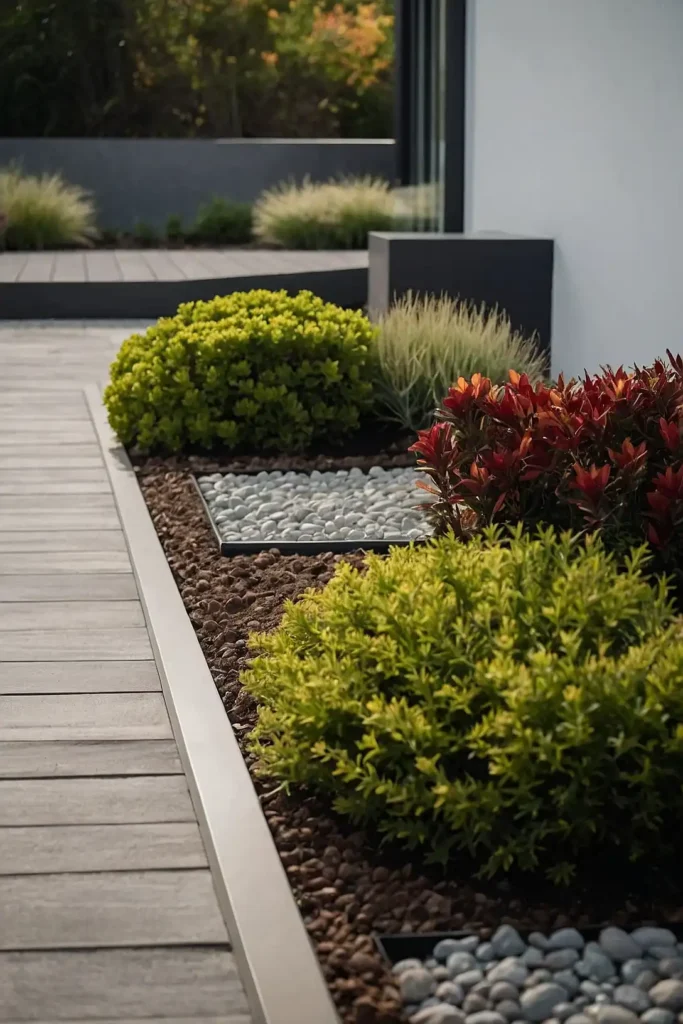
Create clean, contemporary landscapes using limited plant palettes and geometric arrangements.
You achieve sophisticated simplicity that complements modern architecture.
Use three plant varieties maximum with careful spacing and repetition. Include architectural elements like steel planters or concrete borders.
Your minimalist garden makes strong statements through restraint and precision.
27: Four-Season Interest Gardens
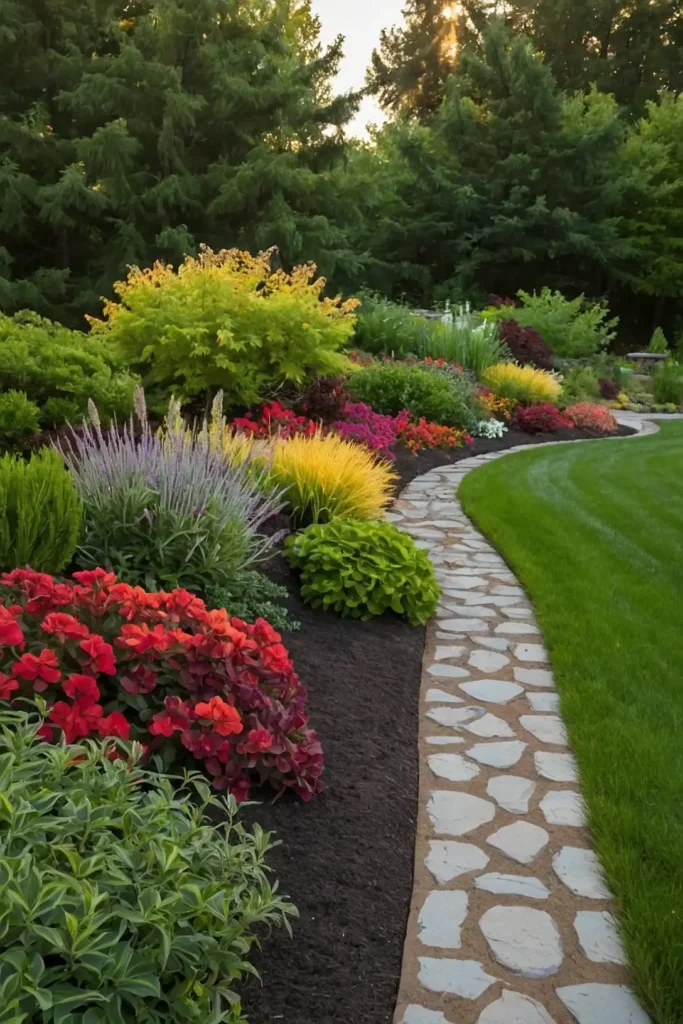
Plan combinations that provide visual appeal during every season consistently. You maintain beautiful landscapes regardless of weather or dormancy periods.
Include spring bulbs, summer perennials, autumn color trees, and evergreen structure.
Add winter interest through seed heads and bark textures.
Your year-round garden provides continuous beauty through every season.
Conclusion
Your front flower bed sets the tone for your entire landscape design.
These creative ideas help you achieve stunning curb appeal that welcomes everyone home.



